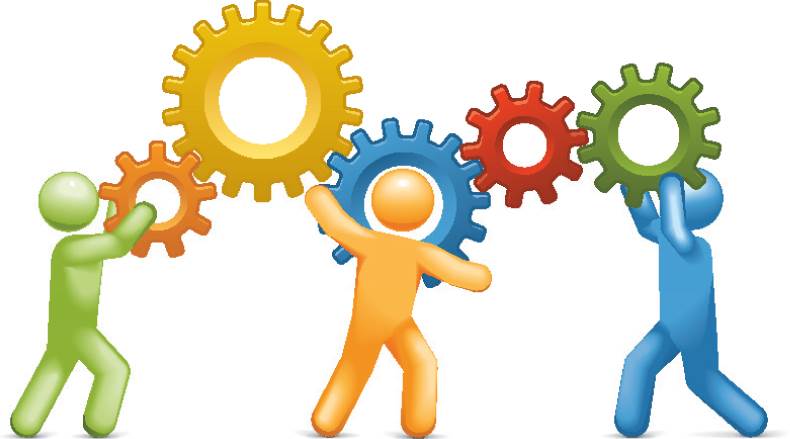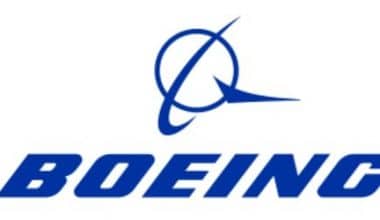Focusing on core competencies enables organizations to optimize their resource allocation and prioritize activities that align with their strengths. As the combination of unique skills, knowledge, technologies, and capabilities is what an organization or individual should possess to excel. This article states all you need to know about what is a core competency with given examples, its strategic approach that allows them to differentiate themselves in the marketplace, deliver superior value to customers, and achieve long-term growth and profitability.
What is Core Competency?
A core competency refers to a specific area of expertise or capability that sets an organization apart from its competitors and contributes to its overall success. It represents the collective strengths, knowledge, and skills that an organization possesses, allowing it to perform certain activities at a higher level than its rivals. Core competencies are unique and difficult to replicate, making them a source of competitive advantage. They provide a foundation for an organization’s strategic positioning, product development, and market differentiation. By focusing on their core competencies, organizations can streamline their operations, allocate resources effectively, and deliver value to customers.
Examples of core competencies can include advanced technological capabilities, exceptional customer service, innovative product design, efficient supply chain management, strong brand recognition, or deep industry knowledge. These competencies are typically developed and nurtured over time through continuous learning, investment, and experience. Identifying and leveraging core competencies is essential for organizations seeking to achieve sustained growth and competitive success. It requires a deep understanding of the organization’s strengths, the needs of the target market, and the competitive landscape. By aligning their strategies and activities with their core competencies, organizations can create a unique value proposition and position themselves as industry leaders.
Core Competencies for Effective Leadership
There is the list of core competencies according to the UNDP framework:
#1. Critical Thinking and Problem-Solving
The ability to analyze information, think critically, and solve complex problems by using reasoning, creativity, and decision-making skills.
#2. Information Literacy
The ability to locate, evaluate, and effectively use information from various sources, including digital and media sources.
#3. Media Literacy
The ability to critically analyze and evaluate media messages, including understanding media bias, interpreting media content, and using media effectively for communication and learning.
#4. Life and Career Skills
These encompass a range of competencies necessary for success in life and future careers.
#5. Strategic Thinking:
The ability to analyze complex issues, identify strategic options, and develop innovative strategies to achieve organizational goals.
#6. Results Orientation
The focus is on achieving quality results and outcomes, setting high standards for performance, and taking ownership of tasks and responsibilities.
#7. Leadership
The ability to inspire and motivate others, provide guidance and direction, and foster a positive work environment.
#8. Collaboration and Teamwork
The ability to work effectively with others, build and maintain collaborative relationships, and contribute to a harmonious team environment.
#9. People Management
The ability to manage and develop people, providing guidance, feedback, and support to maximize their potential and enhance performance.
#10. Communication
The ability to effectively convey information and ideas through various channels and to different audiences, fostering open and transparent communication.
#11. Innovation and Creativity
The ability to think creatively, generate new ideas, and apply innovative approaches to problem-solving and organizational development.
#12. Client Orientation
The focus is on understanding and meeting the needs of clients and stakeholders, delivering high-quality services, and building strong relationships.
#13. Commitment to Continuous Learning
The commitment to continuously improving one’s skills and knowledge, seeking feedback and learning from experience, and promoting a learning culture.
#14. Technological Awareness
The awareness and understanding of current technology trends, their potential applications, and the ability to utilize technology to improve work processes and outcomes.
#15. Planning and Organizing
The ability to set clear goals, prioritize tasks, allocate resources effectively, and manage time efficiently to achieve objectives.
#16. Resource Mobilization:
The ability to identify and secure resources, both financial and non-financial, to support organizational goals and initiatives.
Key Aspects of Core Competency
#1. Strategic Importance
Core competencies are strategically significant for a company. They align with its overall business strategy and contribute to its competitive advantage in the marketplace.
#2. Unique and Differentiating
Core competencies are distinctive to a particular company. They are not easily replicated or imitated by competitors, providing a source of sustainable advantage.
#3. Value Creation
Core competencies enable a company to create value for customers by delivering products or services that meet their needs better than alternatives in the market.
#4. Cross-Functional Integration
Core competencies often involve the integration of various functions and departments within a company.
#5. Long-Term Focus
Core competencies are not easily developed or changed. They are built over time through continuous investment, learning, and improvement.
#6. Competitive Advantage
Core competencies provide a competitive edge by enabling a company to outperform competitors in the market.
Examples of Core Competency
Here are some examples of core competence:
- A software development company that excels in programming languages, algorithms, and software architecture, enabling them to deliver high-quality and innovative software solutions.
- A retail company that focuses on providing exceptional customer service, training its employees to have excellent interpersonal skills, problem-solving abilities, and a deep understanding of customer needs.
- A pharmaceutical company known for its strong research and development capabilities, enabling it to develop new drugs, conduct clinical trials, and bring innovative healthcare solutions to the market.
- A logistics company that has established efficient supply chain management systems, allowing them to streamline operations, optimize inventory, and deliver products to customers in a timely and cost-effective manner.
- A consumer goods company that excels in brand building, marketing strategy, and product positioning, creating strong brand recognition, customer loyalty, and effective marketing campaigns.
Business Core Competency
Business core competency refers to the unique capabilities, knowledge, skills, and resources that a business possesses and that give it a competitive advantage over its competitors. A business core competency refers to a unique strength or advantage that sets a company apart from its competitors and enables it to deliver value to customers. It represents a combination of knowledge, skills, technologies, and processes that a company possesses and leverages to achieve a competitive advantage in the marketplace.
Characteristics of a Business Core Competency
#1. Unique
A core competency is something that distinguishes a company from its competitors. It is a specialized skill or expertise that is not easily replicated or imitated.
#2. Value-Generating
Core competencies enable a company to create value for customers by delivering products or services that meet their needs better than alternatives in the market.
#3. Difficult to Replicate
Core competencies are built over time through investments in resources, capabilities, and knowledge. They are not easily copied or acquired by competitors, providing a sustainable advantage.
#4. Cross-Functional
Core competencies often involve a combination of skills and expertise from different areas of the business.
#5. Strategic alignment
Core competencies should align with a company’s overall strategic goals and vision. They should support the company’s competitive strategy and help differentiate it in the marketplace.
#6. Continuous Improvement
Core competencies are not static. They require ongoing investment, development, and improvement to stay relevant and competitive.
Social Work Core Competency
Social work core competencies are specific knowledge, skills, and values that are essential for social workers to effectively address the needs of individuals, families, groups, and communities. These competencies guide social workers in their practice and help them provide quality services and promote social change. While there are various models and frameworks for social work competencies.
Common Areas of Focus of Social Work Core Competency
#1. Ethical Awareness and Professional Conduct
Social workers are expected to adhere to a code of ethics that promotes integrity, confidentiality, and cultural competence. And also respect for the client’s self-determination.
#2. Diversity and Cultural Competence
Social workers need to understand and appreciate the diversity of individuals and communities they serve. Including different cultural, racial, ethnic, and socioeconomic backgrounds.
#3. Human Behavior and the Social Environment
Social workers must have a strong understanding of human development, psychology, and the impact of social systems on individuals and communities.
#4. Assessment and Intervention
Social workers should be skilled in conducting comprehensive assessments of client’s strengths, needs, and challenges.
#5. Communication and Interpersonal Skills
Social workers should be able to establish rapport, actively listen, and communicate empathically with clients, families, and other professionals.
#6. Advocacy and Social Justice
Social workers play a vital role in advocating for social justice, human rights, and fair access to resources and opportunities.
#7. Research and Evaluation
Social workers should understand the importance of evidence-based practice and be able to critically analyze research findings.
#8. Professional Development and Self-Reflection
Social workers are expected to engage in ongoing professional development to enhance their knowledge and skills.
What is an Example of Core Competency?
An engineering firm that excels in project management methodologies, resource allocation, and coordination, allowing them to deliver complex projects on time, within budget, and with high-quality outcomes.
What are the 12 Core Competencies?
These 12 core competencies reflect a range of skills and abilities required for effective leadership, management, and professional performance in various organizational settings. Here are the 12 core competencies according to the UNDP framework:
- Strategic Thinking
- Results Orientation
- Leadership
- Collaboration and Teamwork
- People Management
- Communication
- Innovation and Creativity
- Client Orientation
- Commitment to Continuous Learning
- Technological Awareness
- Planning and Organizing
- Resource Mobilization
Other core competencies are
- Critical Thinking and Problem-Solving
- Creativity and Innovation
- Information Literacy
- Media Literacy
- Life and Career Skills
What is Core Competency in CV?
Core competency in a CV (or resume) refers to a section where the applicant lists their most important skills and qualifications. These competencies are typically tailored to the specific job or industry the applicant is targeting and are intended to highlight the unique abilities that make the applicant a strong candidate for the position. Core competencies may include technical skills, industry-specific knowledge, and soft skills such as communication, teamwork, problem-solving, and leadership abilities. It’s important to choose core competencies that align with the job description and are relevant to the position. This can help employers quickly identify the candidate’s strengths and match them with the company’s needs.
What are the 3 Main Core Competencies?
The three main core competencies are:
- Technical or Production Skills: These are the specific skills and expertise related to the production process or technical aspects of a business.
- Managerial or Administrative Skills: These competencies involve the ability to manage resources, coordinate activities, and make strategic decisions within an organization.
- Innovation or Intellectual Property: This competency refers to the ability to innovate, create new knowledge, and develop intellectual property assets.
Conclusion
Organizations often identify their core competencies based on several factors, such as customer needs, industry trends, and the unique resources and capabilities they possess. These competencies can be specific to a particular function or span across multiple areas of the business. They are not static and can evolve as the organization adapts to changing market conditions and customer demands. These competencies are central to the organization’s overall strategy and play a crucial role in its success and ability to outperform competitors in the marketplace. Core competencies are not limited to a single skill or expertise but encompass a broader range of capabilities that are deeply embedded within the organization. They are built over time through continuous learning, experience, and investments in research and development.
As a result, core competencies are difficult for competitors to imitate or replicate, providing a sustainable competitive advantage. It is essential to regularly reassess and update core competencies to remain relevant in a dynamic business environment. New technologies, market disruptions, and evolving customer preferences can require organizations to develop new competencies or enhance existing ones to stay competitive.
Related Articles
- Competitive Analysis: Meaning, How to Write One, and Examples
- Sustainable Competitive Advantage: Simple Steps to Gain a Sustainable Competitive Advantage
- COMPETITIVE LANDSCAPE ANALYSIS: What It Is & How To Do It
- 5 Ways Unified Communications Can Give You a Competitive Advantage
- How to gain a competitive advantage






